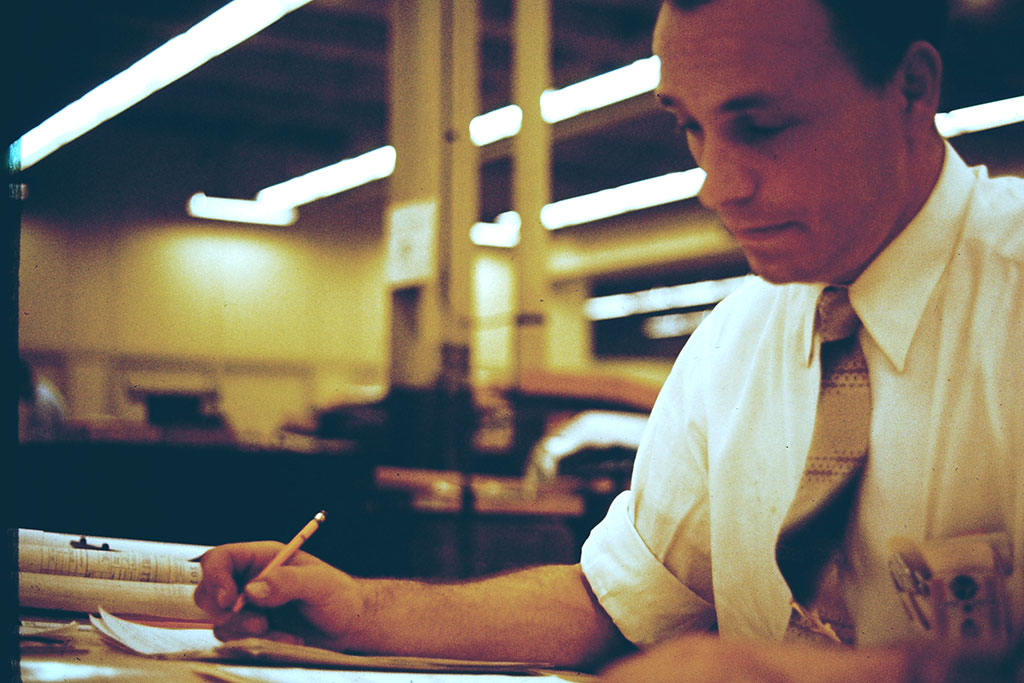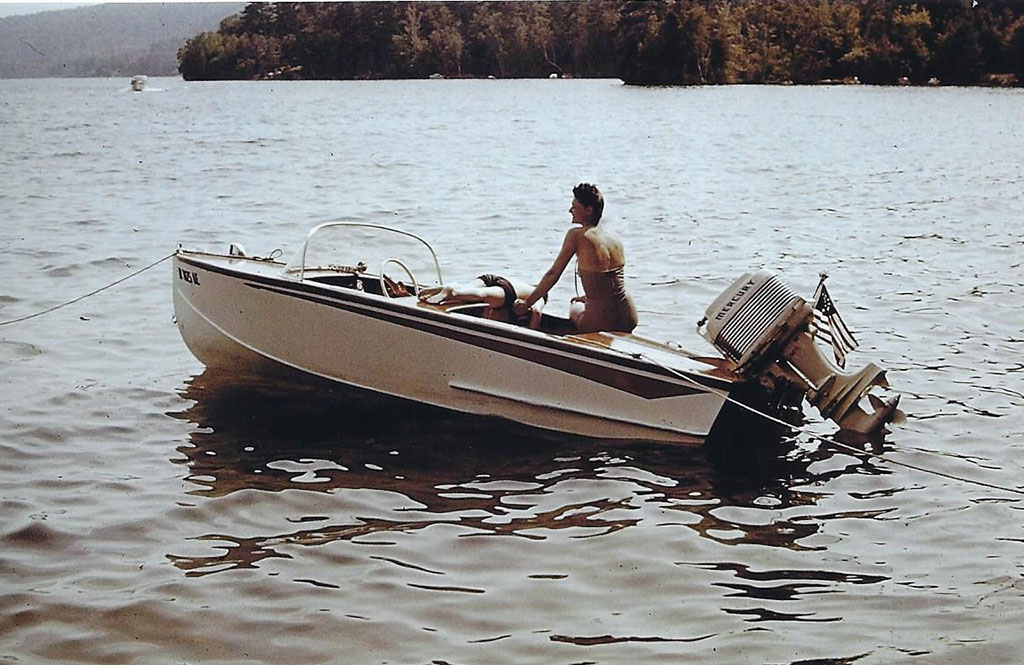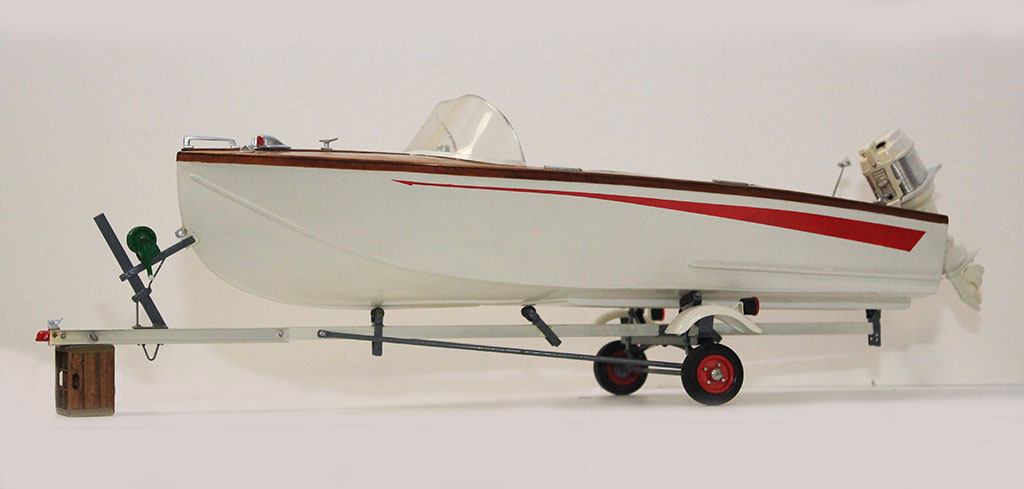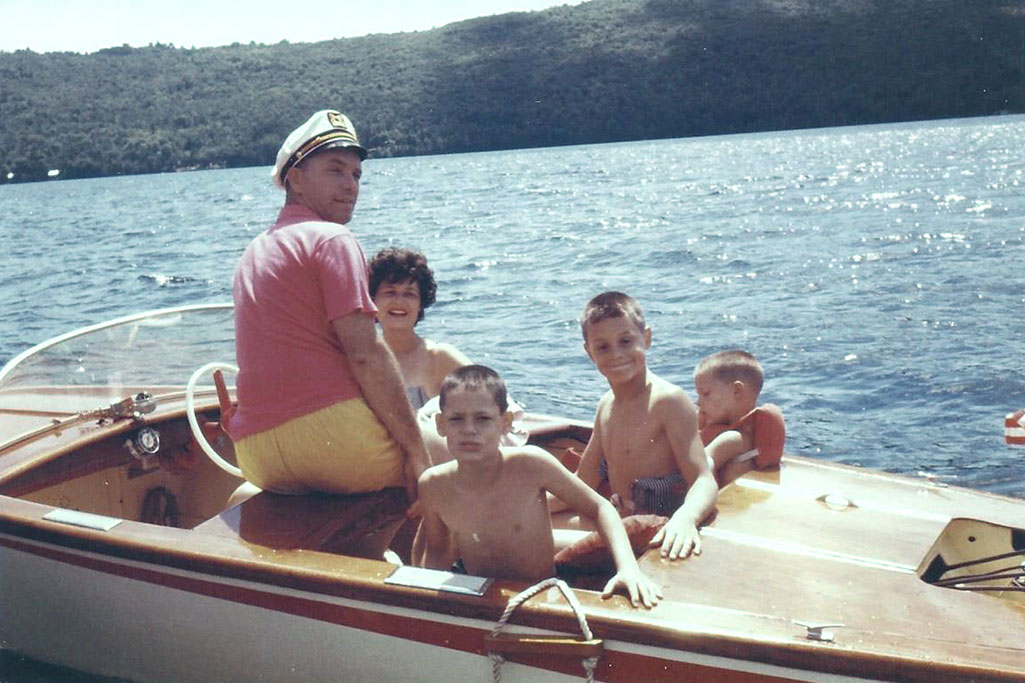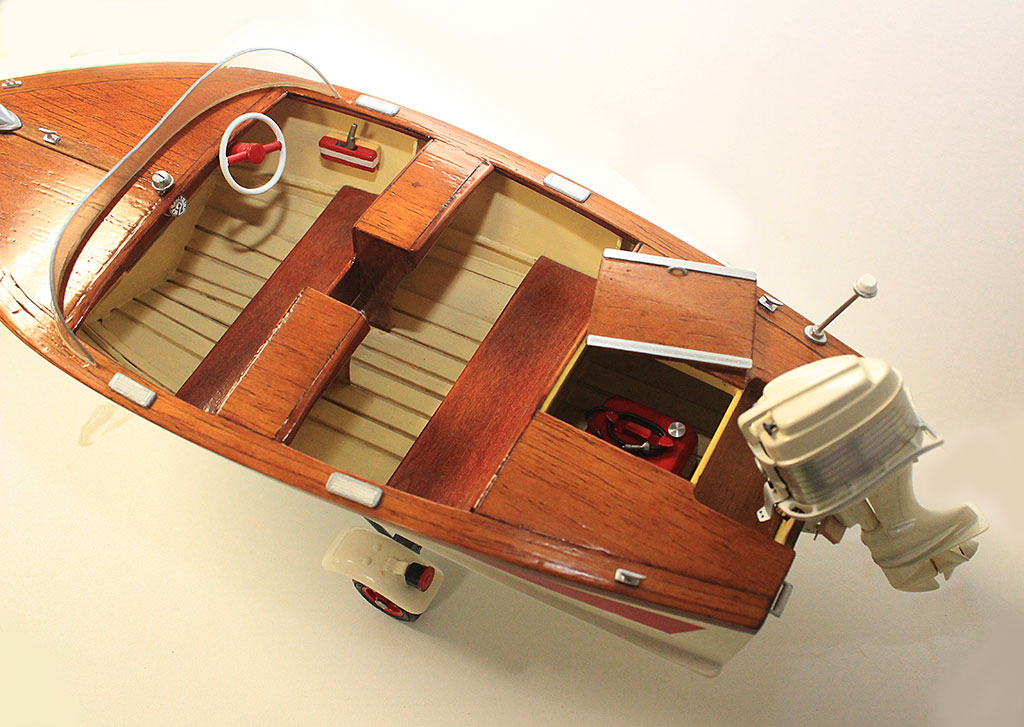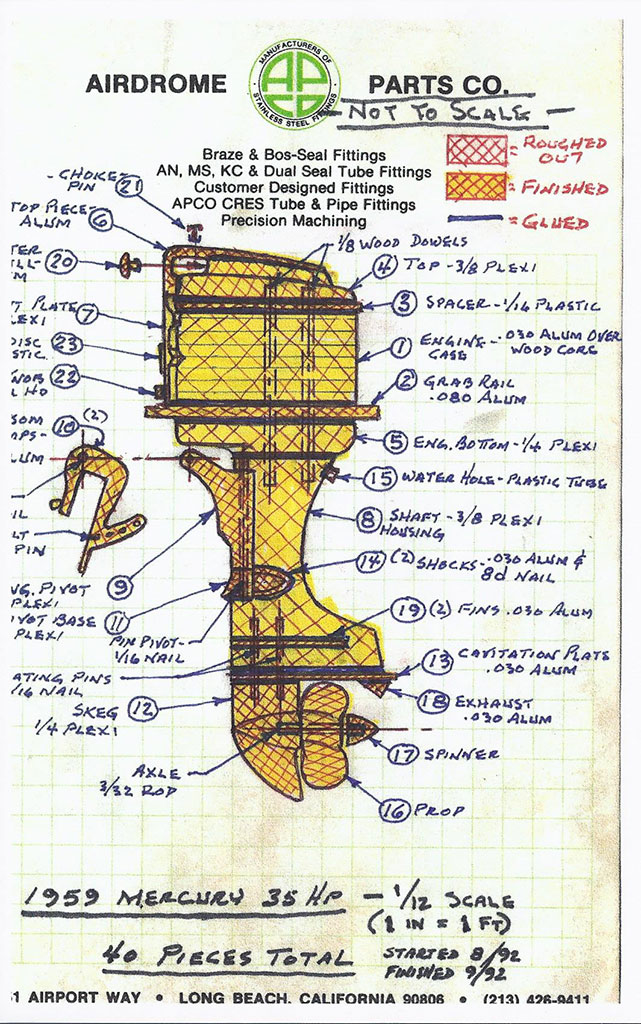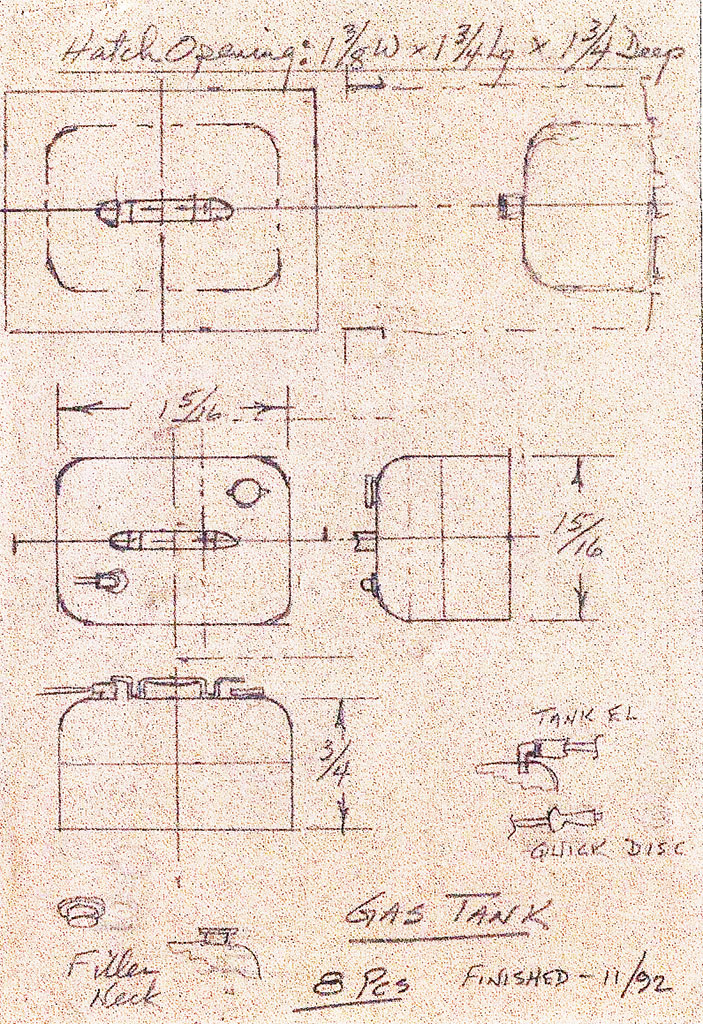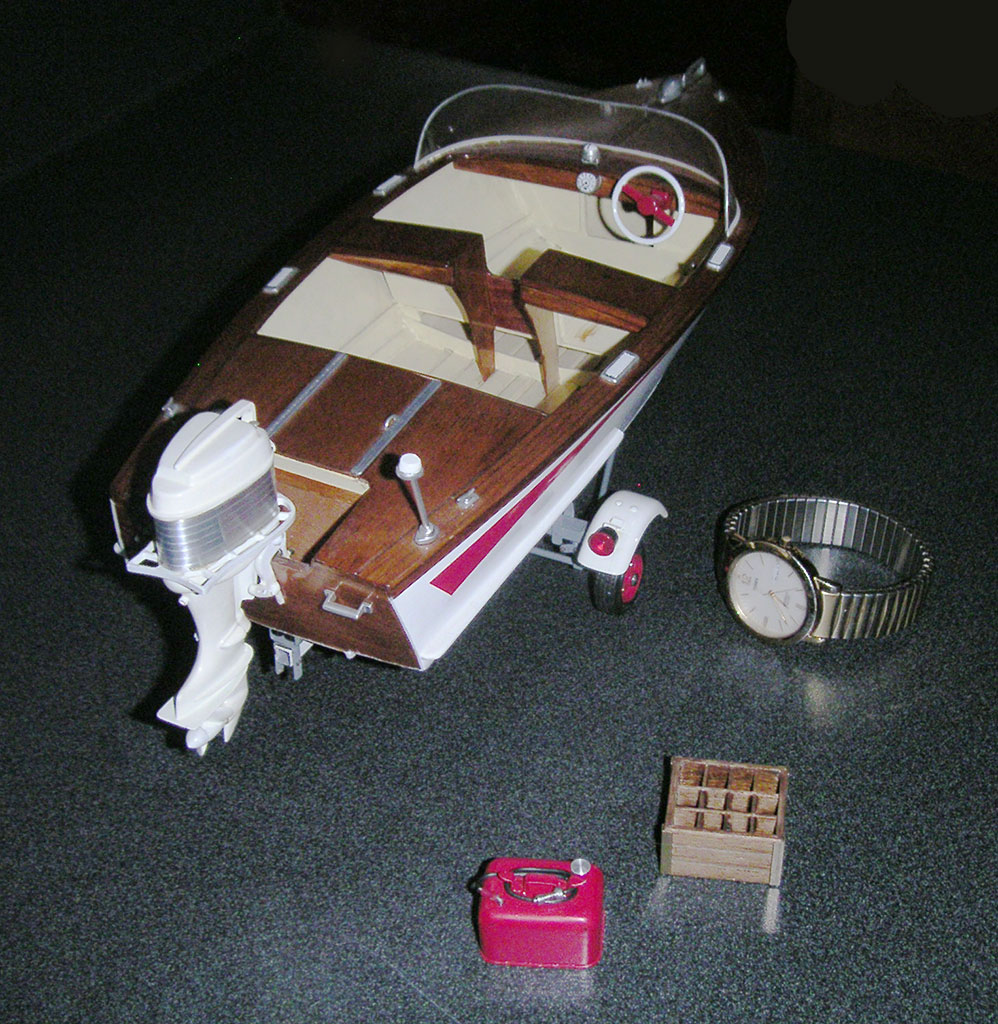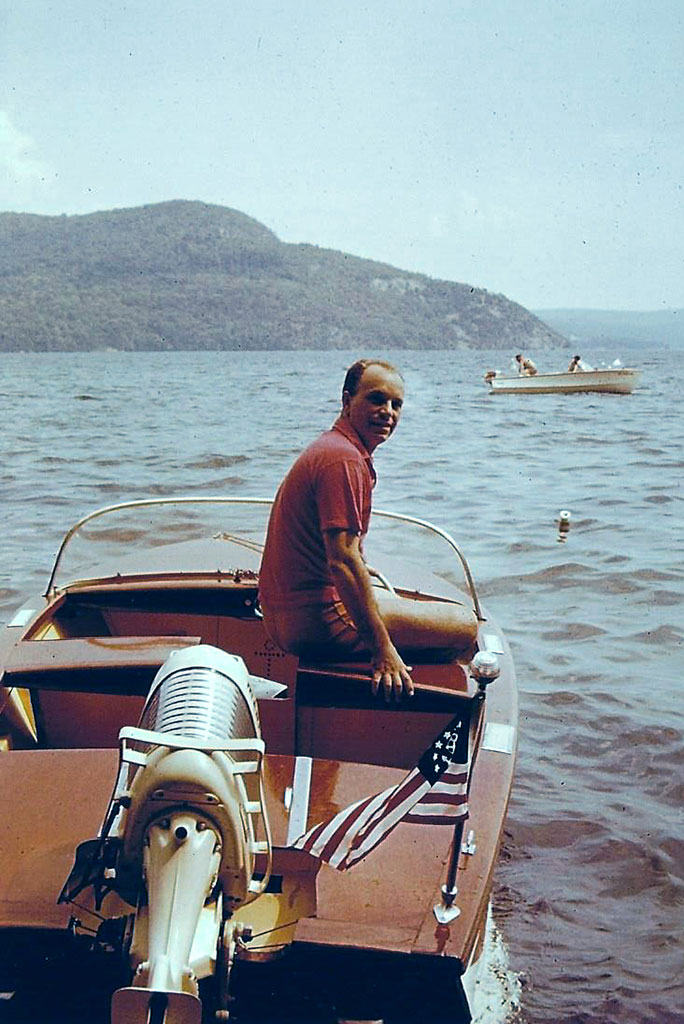Building a Model Boat With Family Ties
Introduction
Robert Rattazzi Jr. has fond memories of family vacations on Lake George, NY while he was growing up. He recalled water skiing behind a small boat that his dad, Robert Rattazzi Sr. had bought and restored. It wasn’t fancy, just a 1952 wooden Trojan 14′ runabout with a 35 hp Mercury outboard. Even so, it was an important symbol to Mr. Rattazzi. Owning his own boat was a mark of success to the self-taught aerospace engineer.
Mr. Rattazzi was raised during the depression, when boat ownership was a seemingly unattainable luxury. He loved the boat so much that years later, when the wooden hull started to rot and was no longer safe, he used his considerable skills as an engineer to document every detail of the boat. He made mechanical drawings not only of the boat, but also the motor and trailer, and Robert Sr. set about making a model of his Trojan runabout. That model has been preserved by the family, and remains a treasured reminder of Mr. Rattazzi. Robert Jr. submitted the following story on his late father’s model, and the history behind it.
The original Rattazzi family Trojan runabout in its heyday. The boat was hooked up to the family’s 1959 Chevy station wagon, and ready for the trip to Lake George.
A Model Boat Packed With Memories
By Robert Rattazzi Jr.
This model was hand-crafted by Robert C. Rattazzi, starting in 1967 and finished in 2001.
- Hull: 1952 14’ Trojan Runabout
- Engine: 1959 Kiekhaefer “Mercury” MK 35A
- Trailer: 1960 Mastercraft
- Scale: 1”:1’
Every piece of this model was hand-crafted from available raw materials, with one exception—the trailer tires were from a kit.
The 1952 Trojan 14′ Runabout was an “entry level” hull, and one of the least expensive models made by Trojan in that year.
An observer of this 34 year long modeling achievement might ask, “Why would a craftsman spend so much time and effort to recreate such an inexpensive and inconsequential boat?” Robert C. Rattazzi was my father, and I know the answer.
Born in 1927, the only child of Italian and German immigrants, Dad didn’t just live through the depression, it became part of him. Claudio Rattazzi, my grandfather, was a ticket taker on the NY City subway system. His command of the English language was tenuous, and he never advanced in his “career.” He grew and raised everything they ate. Not a single square foot was wasted.
His half acre plot in Wyandanch, Long Island, N.Y. featured a rabbit hutch, chicken coop, hen house and pump house— along with every vegetable that could be grown in that climate. And a LOT of tomatoes (for spaghetti sauce). Only the ground under the house was uncultivated, but even that was productive.
His cellar was lined with mason jars because everything that was grown was canned for winter months. He pressed and aged his own wine, made Italian beer and, yes, distilled his own Grappa. Even his driveway was productive, as it was completely enclosed and covered by grape arbors (for the wine).
For my Dad, chopping off a chicken head or killing a rabbit for dinner, and hours hoeing and weeding the crops, shooting squirrels for meat (with .22 Short ammo counted out by his dad, 5 rounds were required to return at least 3 squirrels), was how he grew up.
After discharge from the Army Air Corps in 1946, Dad worked various jobs. He started at Liberty Machine deburring metal parts. He became a machinist and then, his talent easy to see, a draftsman. He transferred to Grumman Aircraft in 1950 as a draftsman, where once again his talent was recognized. He became an engineer (no degree) on legacy programs there.
In the later 60’s, he became a group-leading hydraulics engineer on the new F-14 Tomcat program. Later, he worked at Lockheed ADP (Kelly Johnson’s famous Skunk Works) on the F-117 Stealth Fighter. With little education, he applied his initiative, skill and heart to better himself. He utilized those same qualities to become a very good accordion and organ player.
Dad never resented his upbringing, but he never forgot it either, and in 1957, with a wife, mortgage, two sons (and a third on the way), he bought his family the boat you see here. In Dad’s mind, this was it; he had made it off the farm! He loved that little plywood boat because of the freedom it gave all of us, and the pride he had in owning it. I think owning it was somehow a reassurance that he would never again have to decapitate a chicken.
We lived on an island, so the little wooden “entry level” Trojan spent many summer evenings in Long Island Sound. The annual Grumman “Boat Captain’s Picnic” was a high point in his life for years. Annual summer vacations to beautiful Lake George in Upstate NY started in 1958.
Robert Jr. is seen in the foreground in the back seat, along with older brother Bill (center), and younger brother Dave (far side). His father had modified the original boat to provide step-through access to the rear seat area, and that is faithfully represented in the model too.
By 1967, the little plywood Trojan was no longer able to keep the water on the outside, even with generous amounts of fiberglass patching applied to its keel and chine areas. For one single winter it had been stored in a building that also housed a coal fired heater. It was riddled with dry-rot.
Mom finally said, “I will not allow my children on that boat.” The old Trojan was crushed, and even though it was replaced with a new 1967 14′ Arkansas Traveler (all fiberglass—no “soul”), I believe a little piece of Dad was crushed, too. Unknown to anyone except Dad, he had measured every linear dimension, angle, and detail of that hull before it was dragged away.
When I’ve looked at this model over the years, I relive sitting in that back seat watching the floorboards flex as it pounded its flat bottom over sometimes 2-3 foot waves. Dad was unafraid to see what his little plywood boat could do.
I see myself at 6 years old, shivering in the back as the bow spray went up and over the windshield and into that back seat. I see myself at 8, struggling to learn how to ski behind that Kiekhaefer Mercury. And I remember being 12, and given “Command” when I would drive it while he skied and Mom observed.
Being a design engineer and draftsman, it was only natural that Robert would make detailed drawings of the Trojan before it was scrapped out. In the following years, he recreated his favorite boat in miniature from these reference drawings. Shown here are some hand drawn plans for the 35 hp Mercury outboard motor.
We sons were required to take a boating safety course where I learned to tie knots, and what “Red on Right, Returning” meant. Mostly, and deeply, I remember 1966 when, at 13 years old, he let me “solo.” I think he wanted me to experience that little wooden boat before it was too late. I will never forget the look of pride (and apprehension) on his face as I pulled out from the cove at Rogers Rock Campground on Lake George, all by myself.
What motivates and drives the many craftsmen whose work is in this wonderful museum? I don’t know. I do know that we are all enriched by their work.
And as to the question, “Why would a craftsman spend so much time and effort to recreate such an inexpensive and inconsequential boat?” For Robert C. Rattazzi, my dad, owning the little Trojan was representative of his success and hard work in rising above poverty, and recreating it was his way of saying, “Thank You” to a country that guaranteed its citizens the freedom to be their best.
And so, to him, there was nothing inconsequential about the little plywood Trojan.
—Robert H. Rattazzi
A wrist watch lends a sense of scale to Robert’s miniature Trojan. The Mastercraft trailer was modified with a tilt mechanism to help launch the boat, and also to help drain water from the bottom after it was hauled out of the lake. The trailer usually rested on a wooden milk crate from the local dairy, so that was reproduced in miniature as well.
View more photos of Robert Rattazzi’s scale model Trojan Runabout.

